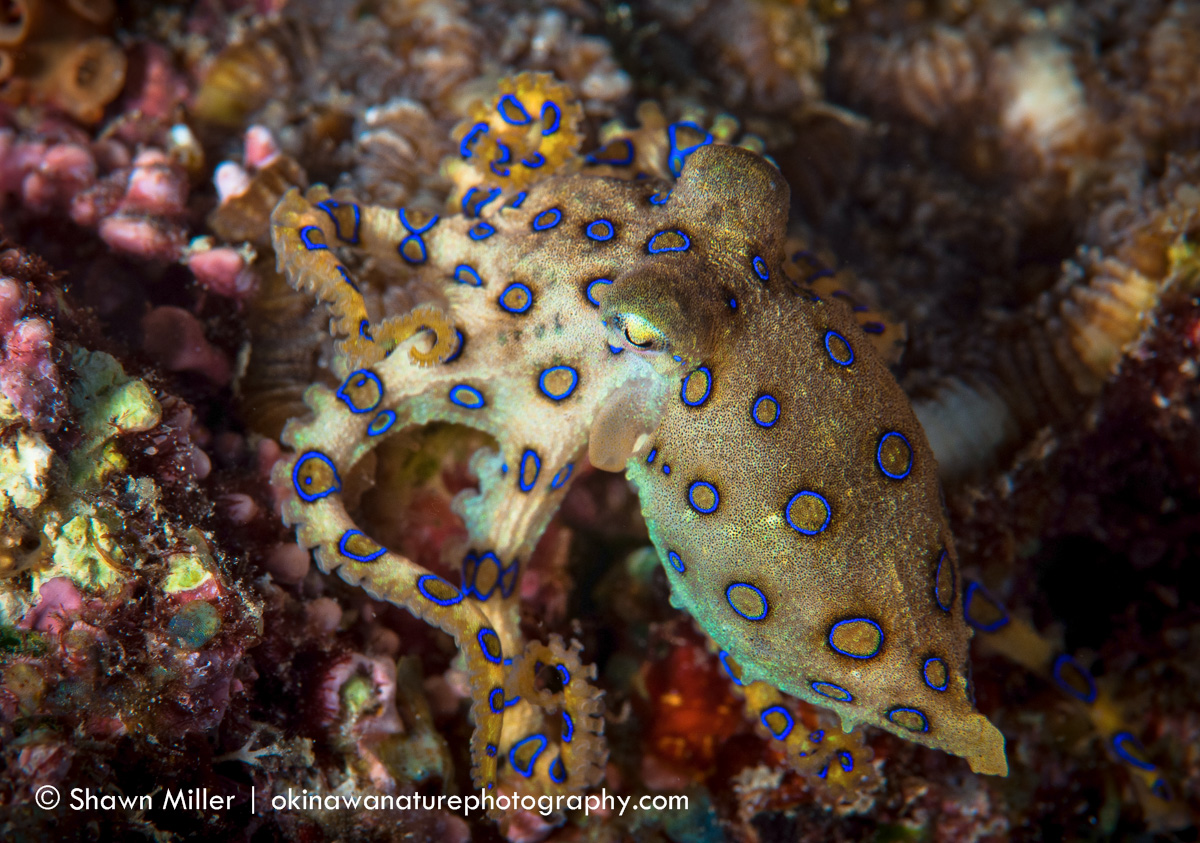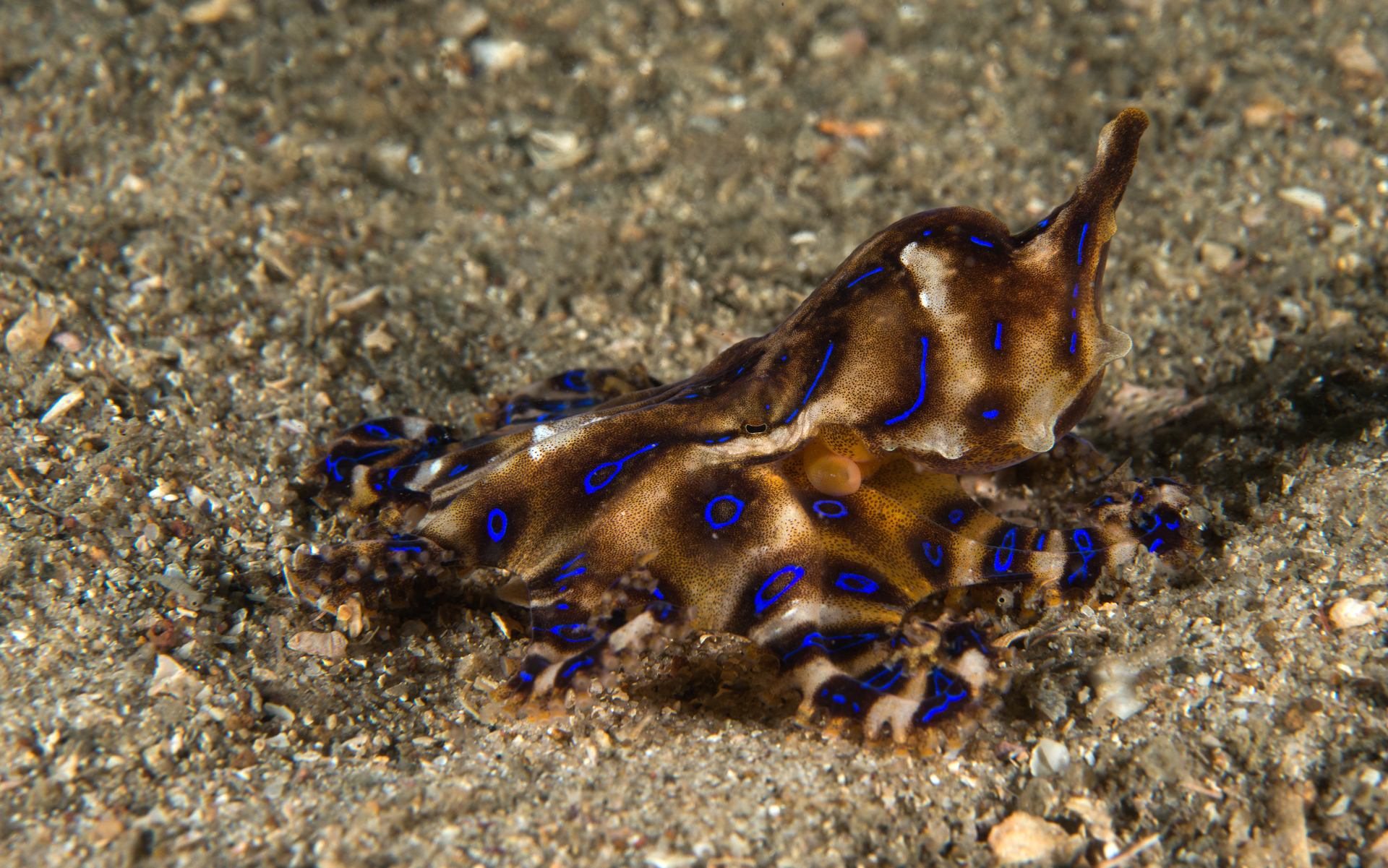

Their distribution ranges from Australia to Southeast Asia, commonly found along the coastlines of the Philippines and Vanuatu, among others. Behavior and Ecologyīlue ringed octopuses tend to inhabit rocky areas or coral reefs in shallow, intertidal waters. Like all other cephalopods, the blue ringed octopus uses a jet-propulsion technique of expelling water from a funnel-shaped part of its respiratory system. Females tend to be larger than males, and like all octopus species, their overall size depends significantly on temperature and the availability of nutrients and light in their particular habitats. Although it is highly venomous, the blue ringed octopus is very small, growing to 5-8 inches (12-20 cm) in length and weighing no more than 1 oz (28 g). However, when threatened, they display a bright yellow highlighted by about twenty-five bright blue rings over their bodies – a warning to others to stay away.

Most species are usually a dull brown or yellow color. Despite their small size, blue ringed octopus contain a potentially fatal venom Descriptionīlue ringed octopus, like all octopus, have eight arms on top of which sit a bulbous ‘mantle’. In fact, the blue-ringed octopus is among the most venomous animals in all of the world’s oceans. They are known for their colorful patterns of bright blue rings and their highly poisonous venom. They are small and tend to inhabit tide pools and intertidal reef habitats. nierstrasziīlue ringed octopus is a small cephalopod of the genus Hapolochlaena, which contains four known species.


 0 kommentar(er)
0 kommentar(er)
